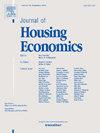绿色建筑 "指令:意大利两个大区的成本与效益量化
IF 2.4
3区 经济学
Q3 ECONOMICS
引用次数: 0
摘要
建筑行业是欧洲温室气体(GHG)排放的重要组成部分。因此,要实现2050年的净零排放目标,就必须实现该行业的脱碳。本文根据目前的技术,评估了实现欧盟建筑能效指令(EPBD)中概述的2030年和2033年中间目标的货币成本。该分析集中在意大利的两个地区,这些地区的建筑存量老化,并表明这些成本是巨大的。我们在伦巴第和皮埃蒙特地区使用了能源绩效证书(epc)的开源微数据,这些数据提供了住宅能源等级的信息和达到更高能源等级所需的改造建议,以及二氧化碳排放和能源消耗。我们估计,伦巴第和皮埃蒙特的住宅存量达到能源D级至少需要1189亿欧元,这相当于这两个地区GDP的20.2%和意大利GDP的5.6%。了解成本和收益的平衡对于评估房主采取节能措施的经济激励至关重要。据估计,这两个地区的家庭每年可节省33亿欧元的能源费用,二氧化碳当量排放量预计每年减少690万吨。虽然房主可能会将个人利益内在化,但他们不太可能将低排放带来的社会利益考虑在内。因此,实现紧急发展方案目标可能需要公共补贴。本文章由计算机程序翻译,如有差异,请以英文原文为准。
The ‘Green buildings’ directive: A quantification of its costs and benefits in two Italian regions
The building sector is responsible for a significant portion of greenhouse gas (GHG) emissions in Europe. Thus, achieving 2050 net-zero emissions targets necessitates the decarbonisation of the sector. This paper assesses the monetary costs, based on current technologies, of meeting the intermediate targets for 2030 and 2033 outlined in the EU Energy Performance of Buildings Directive (EPBD). The analysis focuses on two Italian regions with an ageing building stock and demonstrates that these costs are substantial. We employ open-source microdata on Energy Performance Certificates (EPCs) for the Lombardy and Piedmont regions, which provide information on dwellings’ energy class and recommendations of the necessary retrofits to reach a higher energy class, as well as CO2 emissions and energy consumption. We estimate a total expenditure of €118.9 billion to take Lombardy's and Piedmont's residential stock to at least energy class D, which is 20.2 % of the two regions’ GDP and 5.6 % of Italy's GDP. Understanding the balance of costs and benefits is crucial to evaluate the economic incentives for homeowners to adopt energy efficiency measures. Households are estimated to save yearly €3.3 billion in lower energy bills in the two regions, and CO2-equivalent emissions are estimated to drop annually by 6.9 million tons. While homeowners may internalise the private benefits, they are unlikely to account for the social benefits in terms of lower emissions. As a result, achieving the EPBD targets is likely to require public subsidies.
求助全文
通过发布文献求助,成功后即可免费获取论文全文。
去求助
来源期刊

Journal of Housing Economics
Multiple-
CiteScore
3.30
自引率
4.20%
发文量
35
期刊介绍:
The Journal of Housing Economics provides a focal point for the publication of economic research related to housing and encourages papers that bring to bear careful analytical technique on important housing-related questions. The journal covers the broad spectrum of topics and approaches that constitute housing economics, including analysis of important public policy issues.
 求助内容:
求助内容: 应助结果提醒方式:
应助结果提醒方式:


